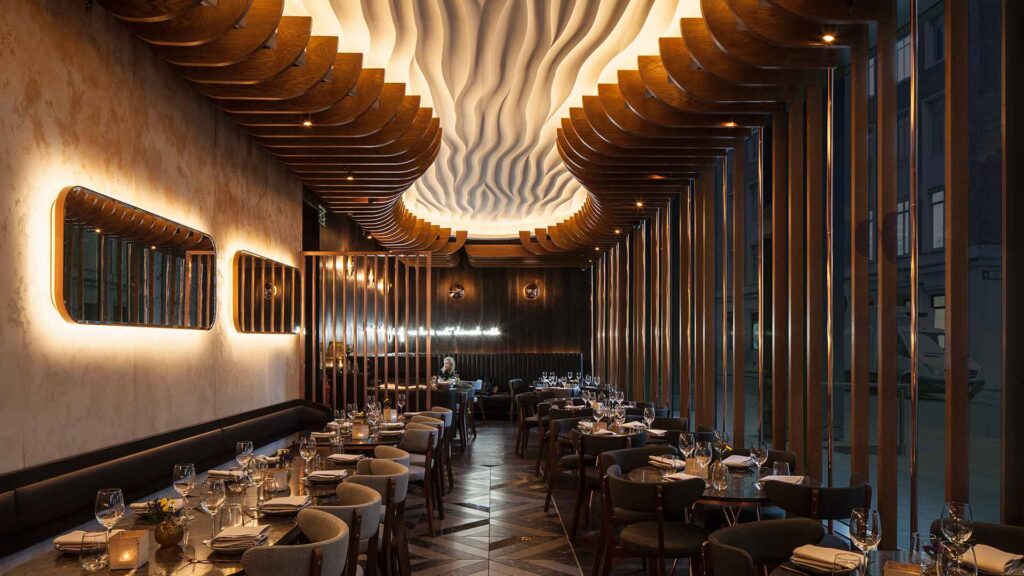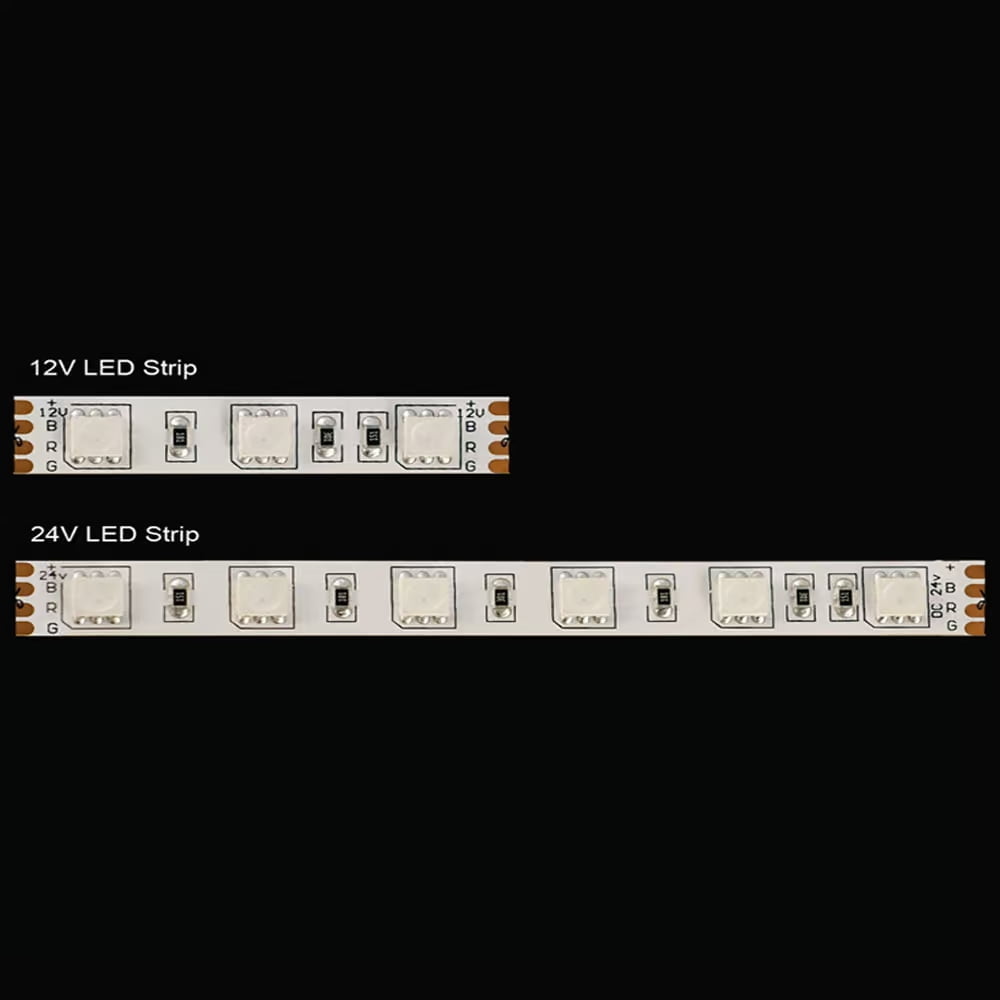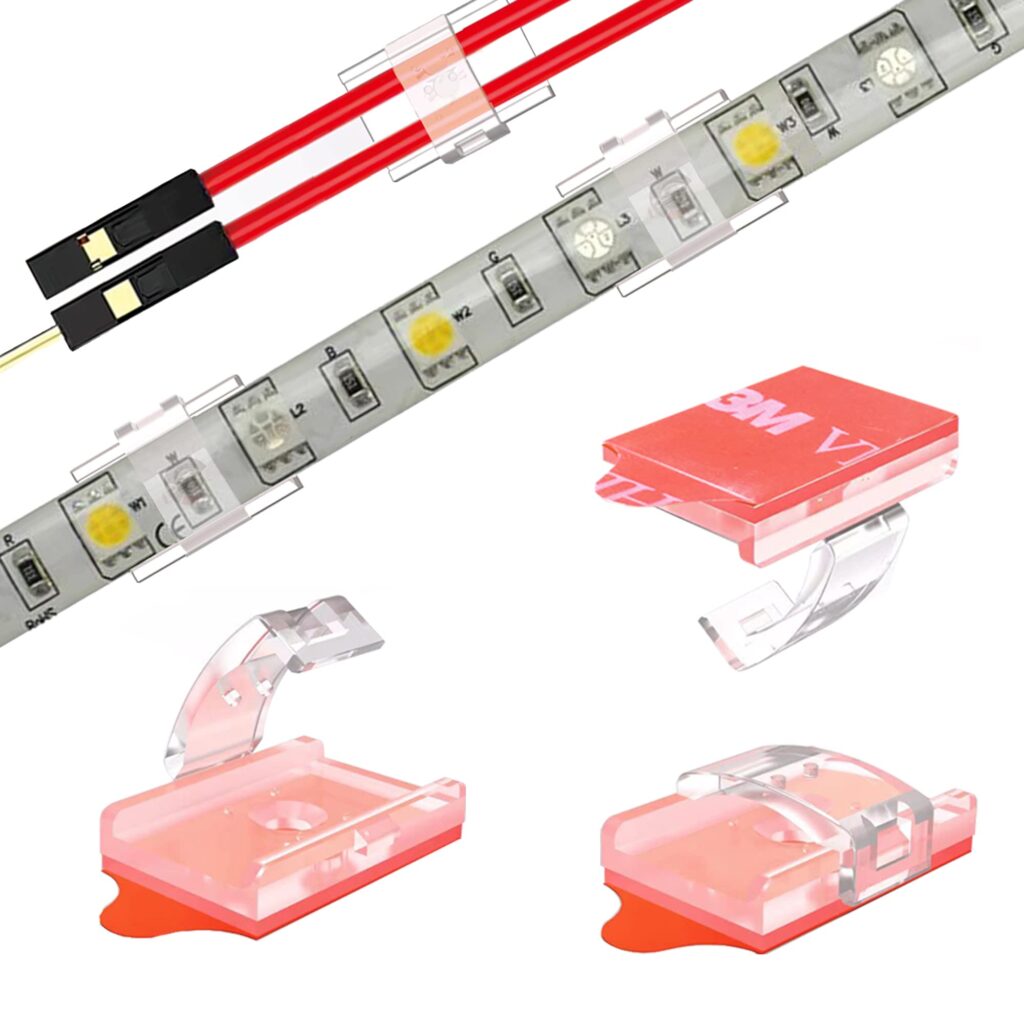16 Common Mistakes to Avoid When Buying LED Strips
Table of Contents
Understanding how to correctly source LED strip lights is crucial to make the most of their benefits and prevent unwanted surprises down the line. While these lights offer a world of opportunities for creative lighting, common mistakes in sourcing can lead to inappropriate choices, subpar performance, and even additional, unplanned costs. In this article, we aim to give you the necessary knowledge to avoid such pitfalls and ensure you make the right choices when sourcing your LED strip lights.

LED strip lights, with their versatility and energy efficiency, have become an increasingly popular lighting option for both residential and commercial spaces. They add a modern touch to any space, providing both functional and ambient lighting solutions. However, despite their growing popularity, many people often encounter problems when sourcing these lights due to lack of knowledge or awareness of certain considerations.
The Significance and Advantages of Proper LED Strip Light Sourcing
The importance of selecting the right LED strip lights cannot be overstated, as it directly influences the desired lighting effect and the overall durability of your lighting system. By choosing the correct LED strip lights, you can enhance the ambiance of any space, improve energy efficiency, and minimize maintenance costs. Conversely, making incorrect choices can result in subpar lighting quality, increased energy consumption, and frequent replacements, which can be expensive and time-consuming.
Common Mistakes Faced in Sourcing LED Strip Lights
Sourcing LED strip lights is a more intricate process than it initially appears. It involves comprehending various technical aspects such as lumens, luminous efficiency, color temperature, and LED density. Moreover, factors like the type of LED strip light, IP rating, power supply, and installation techniques all play pivotal roles in determining the performance and lifespan of the LED strip lights.
Mistake 1: Neglecting Lumens and Brightness Levels
Lumens serve as a measurement of the total visible light emitted by a light source. In the context of LED strip lights, lumens provide insight into the brightness level of the strip lights. Overlooking lumens can result in the selection of strip lights that are either excessively bright or inadequately dim for your intended space.
When sourcing LED strip lights, it is vital to consider the desired brightness for the specific area. For example, a kitchen or workspace may require brighter lights than a bedroom or living room. Therefore, selecting LED strip lights with appropriate lumens based on your specific requirements is crucial.
Mistake 2: Overlooking Luminous Efficiency
Luminous efficiency is a significant consideration when sourcing LED strip lights, as it determines the amount of light produced per unit of power consumed. Neglecting luminous efficiency can result in increased energy expenditures and a diminished lifespan for the LED strip lights.
When choosing LED strip lights, prioritize options with high luminous efficiency. These lights produce more illumination while consuming less power, making them both energy-efficient and cost-effective in the long term.
Mistake 3: Neglecting Color Temperature
Color temperature, measured in Kelvin (K), is crucial in determining the color of light emitted by an LED strip light. It spans from warm (lower Kelvin values) to cool (higher Kelvin values). Failing to consider color temperature can result in a lighting arrangement that does not align with a space’s desired ambiance or mood.
For instance, a warm color temperature can create a cozy and relaxing atmosphere, making it well-suited for bedrooms and living rooms. Conversely, a cool color temperature can promote alertness, making it ideal for workspaces and kitchens. Therefore, it is imperative to select LED strip lights with the appropriate color temperature based on the intended atmosphere of the area.
Mistake 4: Ignoring Color Rendering Index (CRI)
The Color Rendering Index (CRI) is a critical measurement that indicates how accurately a light source can render the true colors of objects, similar to natural lighting. A higher CRI value indicates that the light source can faithfully reproduce the colors of items. Neglecting to consider CRI can lead to inadequate color representation, negatively impacting a space’s aesthetic appeal and practical functionality.
When choosing LED strip lights, it is essential to prioritize options with a high CRI value. This consideration becomes particularly important if you plan to use the lights in environments where color accuracy is crucial, such as art studios, retail stores, or photography studios.
Mistake 5: Neglecting Color Consistency
Color consistency, also called LED BIN or MacAdam Ellipse, is crucial to consider when evaluating an LED strip light. It pertains to the strip light’s ability to maintain a uniform color output throughout its length. Poor color consistency can result in uneven lighting, detracting from a space’s overall aesthetics and functionality.
LED BIN refers to categorizing LEDs based on their color and brightness. LEDs belonging to the same BIN exhibit similar color and brightness, ensuring color consistency when used together.
Similarly, the MacAdam Ellipse is a measurement employed in the lighting industry to quantify the degree of color consistency. For instance, a 3-step MacAdam Ellipse ensures that color variations are practically invisible to the human eye, providing a high level of color consistency.
When sourcing LED strip lights, it is imperative to prioritize options that guarantee color consistency. Our company, MyLikeLed offers LED strip lights with a 3-step MacAdam Ellipse, ensuring exceptional color consistency across the entire strip. Our commitment to quality ensures a consistent and visually pleasing lighting experience for all our customers.
Mistake 6: Overlooking LED Density
LED density refers to the number of LED chips per unit length of the strip. It plays a crucial role in determining the color uniformity and brightness of the LED strip light. Neglecting LED density can result in strip lights with visible light spots or inadequate brightness.
To achieve uniform illumination without any light spots, it is recommended to choose high-density LED strips such as SMD2010 700LEDs/m or COB (Chip on Board) LED strips. These strip lights have more LED chips per unit length, ensuring a more even and brighter light output.
Mistake 7: Ignoring Voltage Compatibility
The voltage of an LED strip light determines its power requirements. Disregarding the voltage compatibility can lead to selecting strip lights incompatible with your power supply, potentially causing damage or reducing the lights’ lifespan.
When sourcing LED strip lights, consider the voltage of your power supply and choose strip lights that operate at the same voltage. For example, if your power supply provides 12V, opt for LED strip lights designed for 12V operation to ensure compatibility and optimal performance.

Mistake 8: Neglecting Cutting Length
The cutting length of an LED strip light refers to the minimum length at which the strip can be cut without damaging the LEDs or the circuit. Ignoring the cutting length can result in strip lights that are either too long or too short for your space, leading to wastage or inadequate lighting coverage.
When selecting LED strip lights, consider the dimensions of your space and choose strip lights with a suitable cutting length. This allows you to customize the size of the strip lights to fit your space precisely, ensuring optimal lighting and minimal wastage. Our MyLikeLed mini cutting LED strip, with 1 LED per cut and a cutting length of only 8.3mm, offers a perfect solution for precise customization.
Mistake 9: Not Considering LED Strip Light Types
LED strip lights are available in various types: single color, tunable white, RGB (Red, Green, Blue), RGBW (Red, Green, Blue, White), and addressable RGB. Each type has its applications and limitations. Failing to consider the type of LED strip light can result in selecting unsuitable lights for your specific needs.
For example, single-color LED strip lights are ideal for creating a specific mood or ambiance, while RGB or RGBW strip lights allow you to change colors and create dynamic lighting effects. On the other hand, addressable RGB strip lights enable individual control of each LED, allowing for more complex and customizable lighting effects.
Mistake 10: Neglecting IP Rating and Waterproofing
The IP (Ingress Protection) rating of an LED strip light indicates its resistance to dust and water. Overlooking the IP rating can lead to selecting strip lights unsuitable for your space’s specific conditions, potentially resulting in damage or reduced lifespan.
If you plan to install LED strip lights in a bathroom, kitchen, or outdoor area, it is important to consider strip lights with a high IP rating to ensure they can withstand moisture and water exposure. Conversely, a lower IP rating would typically be sufficient if you are installing the strip lights in a dry and indoor space.
Mistake 11: Insufficient Power Supply Planning
The power supply is an essential component of your LED strip light setup, as it converts the mains voltage into a suitable power source for your lights. Neglecting power supply requirements can overload or underload your LED strip lights, potentially causing damage or compromising performance.
When choosing LED strip lights, it is crucial to calculate the power requirements based on the strip length and wattage. For instance, if you have a 5-meter strip light with a wattage of 14.4W/m, you will need a power supply capable of delivering at least 72W (5m x 14.4W/m). This calculation ensures that your LED strip lights receive the necessary power for optimal performance and longevity.
However, it is also important to consider the 80% power consumption rule. This rule suggests that the LED strip should only utilize 80% of the power supply’s wattage. Adhering to this rule helps maintain the power supply’s longevity by preventing it from continuously operating at its maximum capacity, which can lead to overheating and premature failure. Therefore, in the example mentioned above, instead of a 72W power supply, it would be better to choose a power supply with a higher wattage, such as around 90W, to ensure safe and efficient operation.
Mistake 12: Incorrect Installation Techniques
The installation technique plays a vital role in the performance and lifespan of your LED strip lights. Common installation mistakes include improper securing of the strip lights, inadequate ventilation, and failure to follow the polarity of the strip lights. These errors can result in damage, reduced lifespan, or suboptimal performance of your LED strip lights.
It is recommended to follow a step-by-step guide to ensure a secure and long-lasting installation of LED strip lights. This includes properly securing the strip lights, providing sufficient ventilation to prevent overheating, and ensuring the correct polarity of the strip lights for proper power flow. Following these guidelines will help ensure your LED strip lights’ successful installation and optimal performance.

Mistake 13: Neglecting Dimming and Control Options
Dimming and control options offer the flexibility to adjust the brightness and color of your LED strip lights, allowing for personalized lighting effects. Overlooking these options can result in a lack of control over your lighting, impacting the ambiance and functionality of your space.
When selecting LED strip lights, consider the desired level of control and automation. If you prefer the ability to adjust brightness or color based on the time of day or mood, look for options with dimming and color control capabilities. Various control methods are available, including remote control, smartphone app control, and integration with voice control via smart home systems.
Mistake 14: Failing to Consider LED Strip Light Lifespan
The lifespan of an LED strip light refers to the duration it can operate before the brightness decreases to 70% of its original level. Neglecting the lifespan consideration can result in frequent replacements, which can be costly and time-consuming.
When sourcing LED strip lights, prioritize options with a longer lifespan. This ensures that your strip lights will maintain adequate brightness for extended periods, reducing the need for frequent replacements. Factors affecting the lifespan include the LEDs’ quality, the strip lights’ design, and the operating conditions.
Mistake 15: Disregarding Warranty and Customer Support
Warranty and customer support are important factors when sourcing LED strip lights. They provide assurance and assistance in case of any issues or defects with the lights. Neglecting these aspects can lead to difficulties in resolving problems, potentially impacting the performance and lifespan of your LED strip lights.
Choosing options from reputable manufacturers that offer a warranty and reliable customer support is advisable. This ensures that you receive necessary assistance in case of any issues, providing peace of mind and guaranteeing the longevity of your LED strip lights.
At our company, MyLikeLed, we prioritize customer satisfaction and product quality. We offer a generous warranty of 5 years for indoor and 3 years for outdoor use. In case of any problems, we request pictures and videos from our customers, and if we can confirm a quality issue based on the provided evidence, we promptly send a replacement. This commitment to customer support and product quality ensures a seamless and worry-free experience for all our customers.
Mistake 16: Not Factoring in Aesthetics and Design
LED strip lights significantly enhance a space’s aesthetics and design. They can highlight architectural features, create mood lighting, or provide functional illumination. Neglecting aesthetics and design can result in a lighting setup that doesn’t complement the overall space.
When sourcing LED strip lights, consider how they will integrate with the design and aesthetics of your space. Consider factors such as color, brightness, and the design of the LED strip lights and how they will harmonize with the existing decor and architectural elements. Additionally, explore creative ways to incorporate LED strip lights in various settings, such as under cabinets, behind TV units, or along staircases, to enhance the aesthetics and functionality of your space.
Conclusion
Sourcing LED strip lights goes beyond simply picking a product from the shelf. It entails a comprehensive understanding of technical aspects and thoughtful consideration of your unique requirements and circumstances. By avoiding the common mistakes discussed in this guide, you can confidently select LED strip lights that offer optimal performance, durability, and aesthetic appeal for your space.
FAQs
LED strip lights are energy-efficient, last a long time, and are very flexible to use. You can easily install them anywhere and adjust the brightness or colors to match your style or needs.
Yes, LED strip lights can be used outside, but they must be waterproof and made for outdoor use. Always follow the correct installation steps to keep them safe from rain or moisture.
High-quality LED strip lights can last up to 50,000 hours if used and maintained properly. Their lifespan depends on how often you use them and where they are installed.
Yes, LED strip lights are safe as long as you use them correctly and avoid overloading the power supply. Make sure they are installed properly and kept away from water unless they are waterproof.
You can use LED strip lights under cabinets, behind TVs, around mirrors, or along stairs. They’re great for adding mood lighting or highlighting certain areas in your home.

Hi, I’m Xylia Xiong, a sales professional with 14 years of experience in the LED strip light industry. I specialize in providing tailored solutions, leveraging my expertise in LED products and the latest industry trends. Known for effective communication and problem-solving, I’m dedicated to helping lighting manufacturers, importers, and distributors achieve their goals.
Let’s work together to create customized solutions that exceed expectations.
Related Posts

The Best LED Strip Lights You Can Buy Right Now

Comparing WS2811 Vs WS2812B: Key Differences


